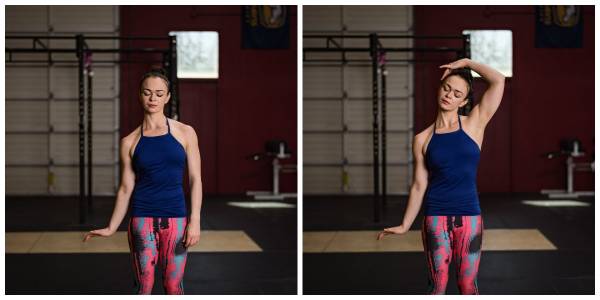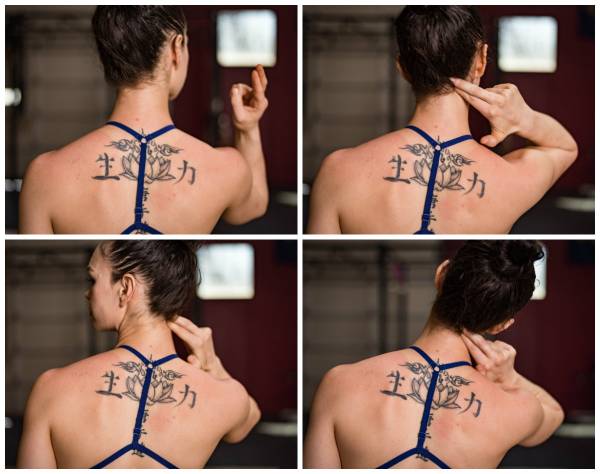Do you work in an office? If so, chances are you have neck and upper back pain. Do you get massages and shoulder rubs which temporarily relieve your pain, only to revert back a couple of days later?
Do you work in an office? If so, chances are you have neck and upper back pain. Do you get massages and shoulder rubs which temporarily relieve your pain, only to revert back a couple of days later?
I don’t know your situation, but I do know that as a trainer and a massage therapist, approximately 80% of my clients complain of tension in their necks and upper backs. Many of these clients work office jobs and suffer from the dreaded “tech neck,” and many of them receive upper back and neck massages to no avail.
This happens because while the upper back and neck are taking the hit for our poor posture, they are usually not the root cause of our issues. In order to relieve tension and pain in the upper back, shoulders, and neck, we’ve got to hit the muscles in the front of our body as well as the back. Try the sequence below, switching movements after 1-2 minutes each.
Massage Your Pecs
Working on your own pectoral muscles is a little awkward. In the pictures below, I demonstrate some of the movements using a lacrosse ball, but you can get the same benefit by using your fingers or a soft fist.
There are a lot of nerves that run through this area, so please remember that any tingling down the arm/pins and needles/fingers falling asleep should prompt you to move the lacrosse ball off of the spot that it’s on. An inch to the left/right/up/down normally does the trick.
- Place the lacrosse ball (your fingers or a soft fist) against the outer chest, right inside of the crease between the chest and the shoulder.
- Begin by applying pressure and rolling the lacrosse ball in small circular motions. Do not roll the lacrosse ball over breast tissue (because ouch).
- Find a spot in the pecs that feels tense, apply a bit of pressure, and then move the arm through some range of motion: reach forward and pull back, move the arm out to your side and above your head, etc.
- Pick a few spots on the pecs and perform similar ranges of motion.
Stretch Your Pecs
The goal with any pec stretch is to lengthen the muscles in the chest, so we place our hand or arm against an anchored surface and turn the chest away from that surface, relaxing the shoulder so that we can pull the front of the shoulder away from the midline.
To target the different fibers in the pecs, perform this stretch with the arm:
- Down by the hip
- Parallel to the floor
- At a diagonal angle up from the shoulder
Stretch Your Lats
- Begin in a kneeling position with a box/chair/couch at an arm’s length in front of you.
- Place your hands face down on the surface.
- Reach your hips back and drop your chest down toward the ground.
Stretch Your Upper Traps
- Begin standing or seated with your torso upright.
- Push the palm of one hand toward the floor (lowering your shoulder away from your ear).
- Use the fingers of the opposite hand to lightly assist the neck to flex toward the opposite shoulder.

The goal is to create as much space as possible between the ear and the shoulder.
Relax Your Suboccipitals
Having a strong finger position is essential for this technique.
- Cross your middle finger behind your index finger and hold both straight.
- Place the fingers directly below the back of the “ridge” of the skull on one side.
- Move fingers in a circular motion and apply pressure.
- With pressure applied, move the head through some ranges of motion.
- For better results, perform this exercise lying down with the head and neck completely relaxed.

Please note: this routine is not guaranteed to yield results. I am not a medical professional, and I cannot diagnose, treat, nor prescribe. My advice should not replace the advice of your medical team. Do not do these drills if you suspect that they will exacerbate your pain.






